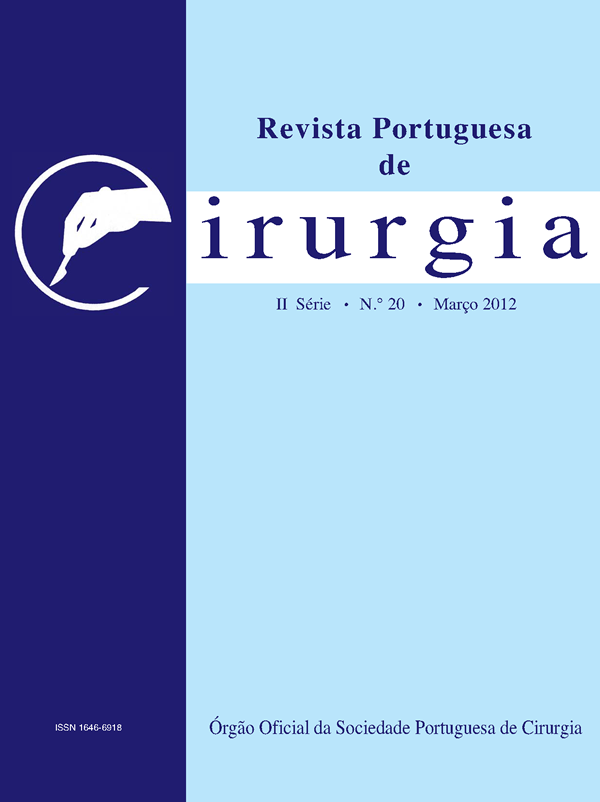Early onset gastric cancer: distinct clinical entity with different prognosis?
Abstract
Background: This study aimed to evaluate early onset gastric cancer (EOGC), considered as gastric cancer in a patient younger than 45 years, as a distinct entity with a different prognosis.
Methods: This study is related to 1256 patients admitted with gastric or gastroesophageal junction carcinoma in Department of Surgery, São João Hospital, Porto, Portugal, between January 1988 and December 2008. EOGC represented 10,6% of the gastric carcinomas treated during this period. The following clinical, pathological and staging parameters were studied: age, gender, tumor location, resectability, type of resection, type of lymphadenectomy [Siewert (GGCS 1993) and Japanese (JGCA 2nd English Edition 1998) classifications], number of lymph nodes studied, tumor dimensions, macroscopic form, histological classification (Laurén and Ming), venous invasion, lymphatic permeation, perineural invasion, depth of wall invasion (T), lymph node metastases (N) – TNM (UICC/AJCC 7th Edition 2009) and Japanese (JGCA 2nd English Edition 1998) classifications and lymph node ratio – distance metastases (M) and stage.
Results: Significant diffe- rences were observed in the type of resection (p<0,001) and type of lymphadenectomy (p=0,008), with more radical surgery performed in EOGC patients. Some tumor characteristics also showed significant differences: tumor dimensions (p=0,004), with EOGC usually smaller; diffuse type according to Lauren’s classification (p<0,001); infiltrative type according to Ming’s classification (p=0,001); less venous invasion (p=0,005); less lymphatic permeation (p=0,029). There were no significant differences in the staging parameters. There were significant differences in the survival rate (p<0,001), with 5-year survival rate of 44% in patients with EOGC compared with 31% in older patients. Cox-regression analysis revealed age, wall invasion depth and lymph node ratio as independent prognostic factors.
Conclusions: This study confirmed EOGC as a distinct clinical entity. Despite more aggressive pathological characteristics, there was a better survival in EOGC group, probably due to better physical status of young individuals and more aggressive surgical treatment in this subgroup of patients.
Keywords: Gastric cancer; Early onset gastric cancer; Prognosis; Clinicopathological characterization
Study partially presented at the 2011 Gastrointestinal Cancers Symposium, San Francisco, USA, 20-22 January, 2011; Abstract published in J Clin Oncol 29: 2011 (suppl 4; abstr 22).
Downloads
Downloads
Published
Issue
Section
License
Para permitir ao editor a disseminação do trabalho do(s) autor(es) na sua máxima extensão, o(s) autor(es) deverá(ão) assinar uma Declaração de Cedência dos Direitos de Propriedade (Copyright). O acordo de transferência, (Transfer Agreement), transfere a propriedade do artigo do(s) autor(es) para a Sociedade Portuguesa de Cirurgia.
Se o artigo contiver extractos (incluindo ilustrações) de, ou for baseado no todo ou em parte em outros trabalhos com copyright (incluindo, para evitar dúvidas, material de fontes online ou de intranet), o(s) autor(es) tem(êm) de obter, dos proprietários dos respectivos copyrights, autorização escrita para reprodução desses extractos do(s) artigo(s) em todos os territórios e edições e em todos os meios de expressão e línguas. Todas os formulários de autorização devem ser fornecidos aos editores quando da entrega do artigo.



